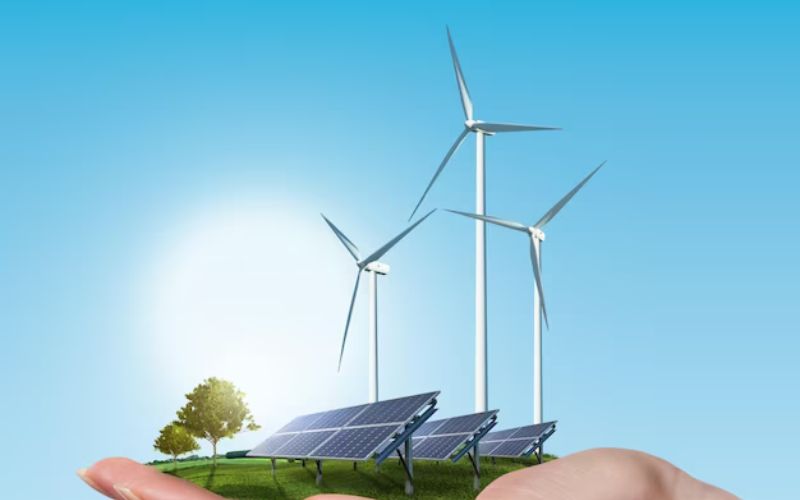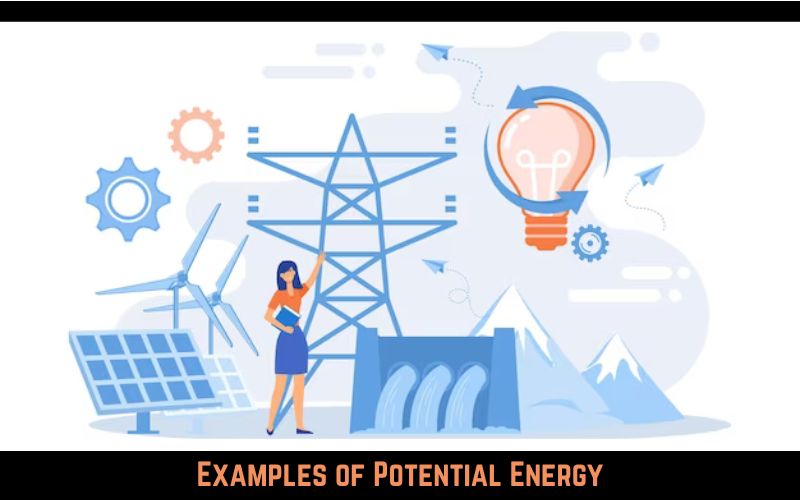Some examples of potential energy are Roller Coasters, Stretched Springs, Dams, Food, Gasoline, Batteries, and Atomic Nuclei.
Potential energy is a fundamental concept in physics, representing stored energy that has the potential to do work. This article explores various instances where potential energy is prevalent, showcasing its diverse forms and applications.
✫ Gravitational Potential Energy: Roller Coasters
Introduction
Roller coasters are thrilling amusement park rides that exemplify the concept of gravitational potential energy. As the coaster climbs a hill, it gains potential energy due to its elevated position.
Activity
- Climbing the Peak: The coaster is pulled to the top of a hill by a chain or lift system.
- Energy Accumulation: At the peak, the coaster has maximum gravitational potential energy.
- Release and Conversion: The coaster descends, converting potential energy into kinetic energy, providing an exhilarating ride.
✫ Elastic Potential Energy: Stretched Springs
Introduction
Elastic potential energy is stored in materials like springs when they are compressed or stretched. This energy is released when the spring returns to its original state.
Activity
- Compression or Stretching: Compressing or stretching the spring stores potential energy.
- Release: When released, the spring returns to its original form, releasing the stored energy.
- Applications: Devices like trampolines and bows utilize elastic potential energy.
✫ Chemical Potential Energy: Batteries
Introduction
Batteries store chemical potential energy, which is released as electrical energy during a chemical reaction within the battery, such as in a voltaic cell.
Activity
- Chemical Reactions: Chemical reactions between battery components release energy.
- Electrical Output: The released energy is converted into electrical energy.
- Device Powering: Batteries power various electronic devices through this process.
✫ Nuclear Potential Energy: Atomic Nuclei
Introduction
Nuclear potential energy is harnessed in nuclear power plants. The fission of atomic nuclei releases a substantial amount of energy.
Activity
- Fission Reaction: Nuclear reactors initiate controlled fission reactions in atomic nuclei.
- Energy Release: The fission releases a massive amount of thermal energy.
- Electricity Generation: The thermal energy is used to produce steam, driving turbines to generate electricity.

✫ Hydroelectric Potential Energy: Dams
Introduction
Dams exploit the potential energy of elevated water. As water flows from an elevated reservoir to a lower one, the gravitational potential energy is converted into kinetic energy.
Activity
- Elevation and Storage: Water is collected in an elevated reservoir behind the dam.
- Controlled Release: Controlled release of water through turbines converts potential energy into kinetic energy.
- Electricity Generation: Turbines connected to generators produce electricity.
✫ Chemical Potential Energy: Food
Introduction
The food we consume stores chemical potential energy. During digestion, this energy is released and utilized by our bodies for various functions.
Activity
- Consumption: Ingesting food provides the body with potential energy.
- Digestive Processes: Chemical reactions in the digestive system break down food, releasing energy.
- Metabolic Functions: Released energy supports bodily functions like muscle contraction and temperature regulation.
✫ Geothermal Potential Energy: Earth’s Interior
Introduction
Beneath the Earth’s surface, geothermal potential energy resides in the form of heat. Geothermal power plants tap into this energy for electricity generation.
Activity
- Heat Extraction: Wells are drilled into the Earth to access hot water or steam.
- Turbine Operation: Extracted heat is used to produce steam, driving turbines.
- Electricity Generation: Turbines connected to generators convert thermal energy into electricity.
✫ Magnetic Potential Energy: Magnetic Levitation
Introduction
Magnetic potential energy is observed in systems using magnetic levitation, like Maglev trains. Magnets repel or attract each other, storing potential energy.
Activity
- Magnetic Forces: Magnets are positioned to repel or attract, storing potential energy.
- Levitation: Magnetically levitated objects, like Maglev trains, experience a release of potential energy.
- Kinetic Movement: The released energy propels the train forward.
✫ Chemical Potential Energy: Gasoline
Introduction
In an internal combustion engine, gasoline stores chemical potential energy. This energy is released through combustion, driving the pistons and ultimately propelling vehicles.
Activity
- Combustion Reaction: Gasoline undergoes combustion in the engine.
- Piston Movement: Released energy moves pistons in the engine.
- Vehicle Propulsion: The movement of pistons propels the vehicle forward.
✫ Tidal Potential Energy: Tidal Power
Introduction
Tidal potential energy is harnessed by tidal power plants. As tides rise and fall, the gravitational interaction with the Moon and the Sun creates potential energy.
Activity
- Tidal Changes: Rising and falling tides create potential energy in water.
- Turbine Activation: Turbines strategically placed in tidal zones capture kinetic energy from moving water.
- Electricity Generation: The captured energy is converted into electricity for various applications.
From amusement parks to power plants, potential energy manifests in various forms, contributing to both the excitement of everyday experiences and the generation of essential resources. Understanding these examples broadens our appreciation for the ubiquitous role of potential energy in our world.

